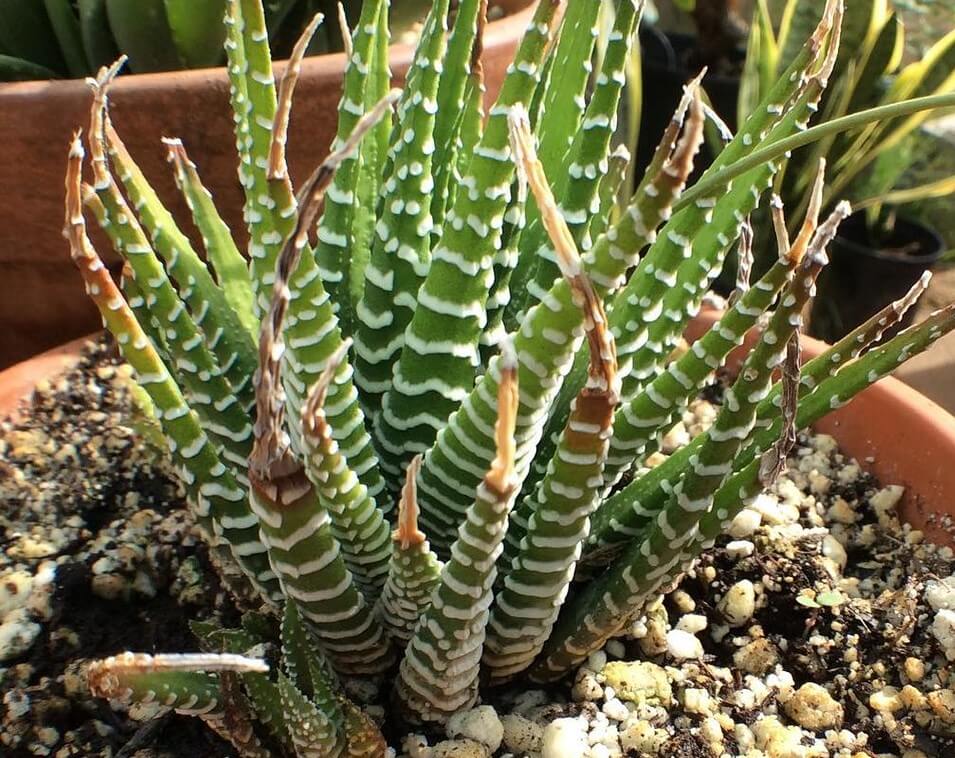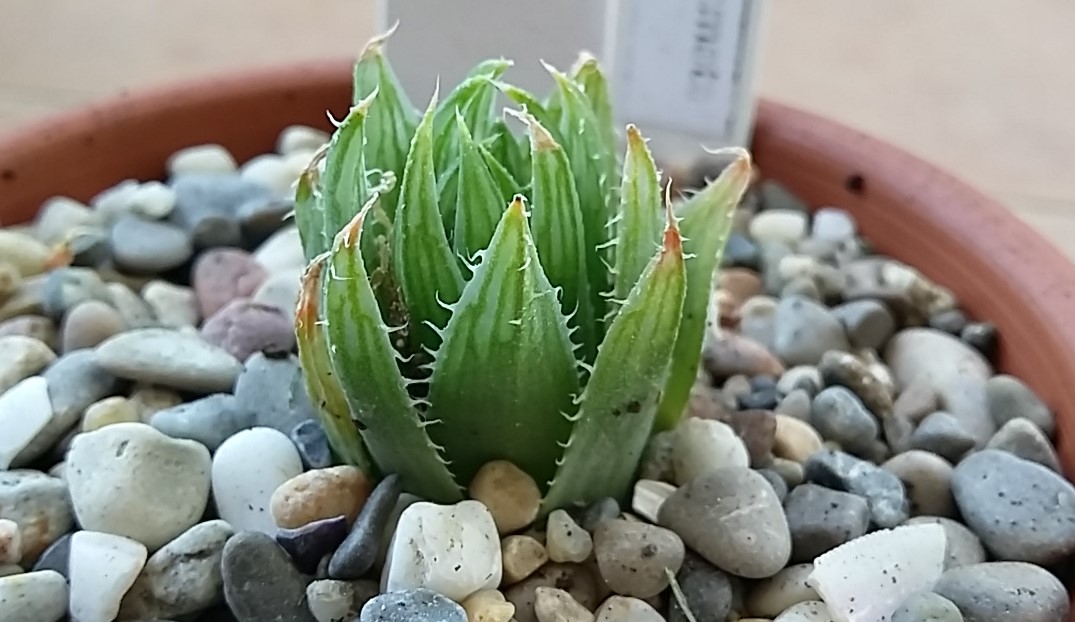As plant caretakers who care much, we see a problem many with succulents have: yellow haworthia leaves. Seeing yellow is sad and does not make sense, as these plants stay green and care is easy. Through what we have seen, yellow leaves mean look closer at how we care.
To know why leaves change color and make plants well once more, we have some care tips. Our guide will show strategies against yellow that help tough haworthia live long.
We will find what causes plants distress and how care different brings green back to fill leaves as before. Solutions exist for this perplexing sight through steady care and watching change.
With guidance, trouble fades and haworthia prosper as their nature intends.
Key Takeaways
Causes of Yellow Leaves
- Common reasons behind yellowing
- Detect issues early
Prevention
- Care tips to stop leaves turning yellow
- Keep leaves vibrant green
Reversal
- Act quickly to reverse yellowing
Plant Care
- Expert advice for healthy haworthias
- Maintain the beauty of these succulents
The central points focus on recognizing and fixing yellowing leaves. Expert guidance sustains the radiant color. Care and attention guard the plants.

Unveiling the Culprits Behind Yellowing Haworthias
We examine why haworthia leaves turn yellow. Like detectives, we uncover the culprits behind this worrying sign. We must know the enemies of good haworthia care.
It is vital to sustain the health and beauty of these succulents. What makes the leaves lose their green luster? The answers guard against further yellowing. They keep the plants thriving.
Root Rot: The Hidden Threat Below the Surface
Root rot stalks haworthias. Too much water, poor drainage, the killers come. Roots suffocate, soil stays soggy. Decay takes them. Leaves yellow, cry for help. The threat hides below.
Good soil drainage saves them. Holes stop the silent killer. Safeguard roots or they turn against you.

Overwatering vs. Underwatering: Striking the Right Balance
Watering haworthias presents a balancing act. Too much water rots the roots. Too little water stresses the plant.
The aim is to find the sweet spot – where the soil clings to just enough moisture for the roots to drink, but not so much that they drown. This allows the haworthia to thrive.
- Check the soil before watering; if the top inch feels dry, it’s time to water.
- Water deeply, but ensure excess water can escape through proper drainage holes.
- Allow the plant to dry out between watering sessions to avoid water stagnation.
Nutrient Deficiencies and Their Telltale Signs
Missing iron and manganese:
The search showed that haworthias need important nutrients like iron and manganese in the soil. Not having enough of these nutrients stops the process where plants make their own food, leading to brown and yellow leaves.
Not enough nitrogen:
A lack of nitrogen causes pale or yellow-colored leaves on succulents. Nitrogen helps leaf and stem growth and makes the plant stronger, so without enough nitrogen the leaves become weak and pale.
Missing phosphorus:
Phosphorus supports new growth, root development, and flowers. Not having enough can cause stunted growth and flowers that are late coming on succulents.
In summary, not having enough iron, manganese, nitrogen or phosphorus can all potentially show up as yellow leaves on haworthias.
Checking the nutrients in the soil and adding what is missing may help prevent or treat such issues. The key thing is to identify the specific missing nutrient by other symptoms seen to properly deal with the problem.

Haworthia Turning Yellow: Identifying the Common Indicators
The leaves of haworthia plants sometimes turn yellow. This shows the hardy succulents are in distress. Catching the yellowing early allows gardeners to help the plants quickly. The goal is to bring back the vibrant green leaves. We will look at what causes haworthias to turn yellow. This will help gardeners know what to watch for.
- Initial Signs: Observe the margins of the leaves where a pale yellow tint may manifest, suggesting the onset of an issue.
- Advancing Symptoms: Note any progressive yellowing leaves, which might escalate to a more intense coloration if underlying problems persist.
- Whole Leaf Change: When entire leaves are turning yellow, this could indicate a systemic response to adverse conditions.
We should remain particularly vigilant of such symptoms in environments of low light, where haworthias may struggle to maintain their lush green hue. Below is a detailed table listing the various stages of yellowing, which can serve as a diagnostic tool:
| Stage | Description | Possible Causes |
|---|---|---|
| Early | Soft yellowing at the tips and along the leaf margins | Low light exposure, initial water stress |
| Middle | Deeper yellowing, progressing inward from the leaf edge | Overwatering or underwatering, nutrient deficiencies |
| Late | Pervasive yellowing, leaves becoming weak or brittle | Severe root rot, prolonged light deficiency, or improper soil conditions |
It’s our duty to accurately interpret these manifestations in our haworthia plant’s leaves. Recognizing whether the discoloration is limited to a certain area or widespread can guide our subsequent care strategies to mitigate the yellowing leaves and maintain the plant’s overall health.
Proper Watering Techniques for a Thriving Haworthia
The haworthia craves care in hydration. Master this, and lush health follows. Rigid schedules matter little. Observe the succulent, understand its needs. Therein lies the art.
What practices ensure the soil moisture perfectly suits the haworthia? The plant will tell you, if you watch. Its thriving depends on your perception. Dive deeper into its unique rhythms. Cultivate an environment where it flourishes. Tend it with care, sensitivity and wisdom. This is the way of things.
Decoding the Soil Moisture Levels
The soil must be dry before watering again. Feel the top inch. If dry, the plant needs water. This is usually every 2-3 weeks. Each plant differs. Light, temperature, pot size matter.
- Check soil moisture by gently pressing a finger into the potting soil; if it feels dry at one inch deep, it’s time to water.
- Wait until the soil is almost bone dry, but do not allow it to completely desiccate—consistent soil moisture without wetness promotes healthy root growth.
- Use a moisture meter as a more precise tool for gauging soil moisture levels if you prefer not to rely on touch alone.
When to Water Your Succulent: Timing is Key
Know when to water the plant. Don’t water often. That’s bad. Best sign to water: dry soil.
- Before watering, check soil is dry. Wait at least a week since last watering.
- Water thoroughly. Water flows out the drainage holes. Soil is wet. Excess water escapes.
- Don’t let plant sit in water. Causes root rot. Empty saucer under pot after watering.
- Water in morning. Soil dries during day. No moisture overnight.
Follow watering rules. Plant gets enough water. Stays healthy. No yellow leaves or water stress.
The Role of Light and Shade in Haworthia Care
The haworthia needs the right light. Too much sun burns the leaves. Too little light and the plant gets spindly and pale. Morning light is best. That first soft sunlight makes the haworthia grow strong. Afternoon light is too harsh. It can hurt the plant. Find the middle way between sun and shade.
Get the balance right and the haworthia thrives. The leaves plump up, the green deepens. Place it where filtered sunlight falls in the early hours. When midday comes, move it back or shade it. Let it rest while the sun rages. Then return it to the late light. With care, your succulent will be healthy and look its best.
This is the key: neither too much nor too little. The goldilocks zone. Dawn to mid-morning light nurtures the haworthia. The noonday and afternoon sun may damage it. Find the right rhythm of sun then shade.
Master this and your plant will flourish.
- Introduce haworthia to direct sunlight gradually to avoid shock.
- Monitor light quality and duration—early hours are preferable for direct sun exposure.
- Utilize sheer curtains or blinds to produce filtered sunlight during intense midday hours.
- During peak summer, consider a light cloth outdoors to provide a barrier against harsh rays.
- Remember that not just haworthia, but other similar types like aloe, also benefit from such light modulation.
Selecting the Correct Soil and Pot to Prevent Yellow Leaves
Keeping haworthia healthy. Green leaves, not yellow. Soil and pot choices critical. Gardeners overlook importance. Shed light on significance. Explore soil mix and pot size. Can revolutionize plant care.
Importance of Good Drainage and Aerated Potting Mix
- Opt for potting soil with amendments like perlite or pumice to increase aeration
- Check for a mix that is labeled “well-draining” to avoid water retention issues
- Avoid using garden soil as it typically lacks the necessary drainage properties
Choosing the Right Container: Size Does Matter
- Select a pot that’s slightly larger than the plant’s root ball, allowing for growth
- Ensure the chosen pot has drainage holes to prevent water buildup
- Consider repotting your haworthia if growth seems stunted or water sits in the pot for prolonged periods
